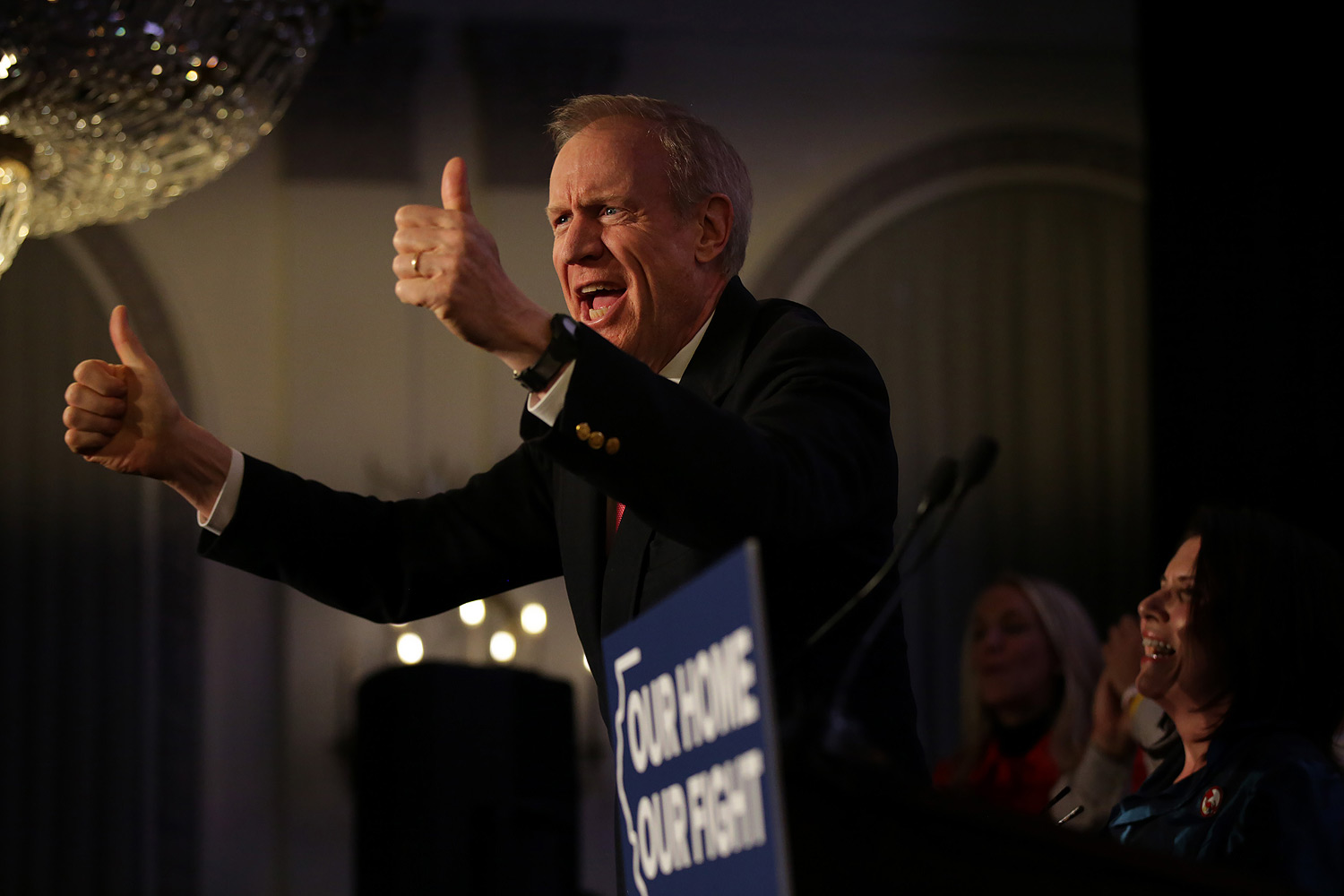Four long years ago, political rookie Bruce Rauner just barely edged out former DuPage County GOP chairman and state senator Kirk Dillard by 2.8 percentage points, or a mere 23,000 votes, after polling well ahead of his more experienced but less wealthy opponent.
Last night, incumbent governor Bruce Rauner just barely edged out Jeanne Ives, a state representative from the DuPage county seat of Wheaton, by 2.98 percentage points, or a mere 20,122 votes, after polling well ahead of her and raising much more money—$215 per vote, according to the Illinois Campaign for Political reform, compared to Ives's $12 per vote.
So, history repeats itself. Except not quite.
Rauner owed his 2014 victory to Chicago and the collar counties. He beat Dillard by more than 26,000 votes in Cook County, and dominated Dillard in the collar counties: an 11,000 vote gap in Lake County, almost 7,000 in McHenry, almost 5,000 in Kane, almost 6,000 in DuPage, 6,500 in Will. It was more or less what people expected from a fiscally conservative, socially ambivalent candidate.
Enter Jeanne Ives, who centered social conservatism in her campaign. She cut Rauner's margin in Cook County down to 10,500, and won all the collar counties but Lake. (Dillard had the disadvantage of Bill Brady and Dan Rutherford also running, but the Chicago area was also their weakest region.) Below shows how Ives performed well in Chicagoland; her winning counties are in red.
In far downstate Illinois, Rauner's 2018 map looked a lot like his 2014 map—he lost a lot of counties in the middle of the state's lower third, but small counties and not by much. What flipped for Rauner was the state's middle third, particularly around the urban areas of Springfield, Decatur, Champaign, and St. Louis. From this map, you can see where Dillard beat Rauner (in red).
He had a 2,385 vote margin in Champaign County, another thousand in Macon County (Decatur), a thousand in Sangamon (Springfield), and about 2,800 in Madison and St. Clair across the border from St. Louis. That's about a 7,000 vote margin, close to his margin in Cook County alone.
And downstate voters came out. According to Scott Kennedy's invaluable Illinois Election Night, downstate made up 54 percent of the vote, compared to 50 percent in 2014. And the collar county vote fell, from 31 percent to 27 percent of the statewide vote.
It doesn't seem like great news for Rauner, bleeding support in what was his breakthrough area, and losing much of it to a candidate who started her campaign late, and even with the support of the Uihleins, was vastly outspent by Rauner.
Worse yet, J.B. Pritzker did very well downstate. Pritzker started his campaign early, putting in time and money there. And it paid off. Pritzker beat Chris Kennedy and Daniel Biss handily almost everywhere, but according to Scott Kennedy's numbers, downstate was the only region where Pritzker got an actual majority: 53 percent.
It's easy to forget that Rauner, who has so dominated the political landscape over the past four years, just squeaked into the Republican nomination in 2014 after underperforming his polls. That he did so again last night is not, in and of itself, all that bad. But in 2018 he'll be the extremely unpopular incumbent running against an outsider businessman with virtually unlimited money, and then history might actually repeat itself.



